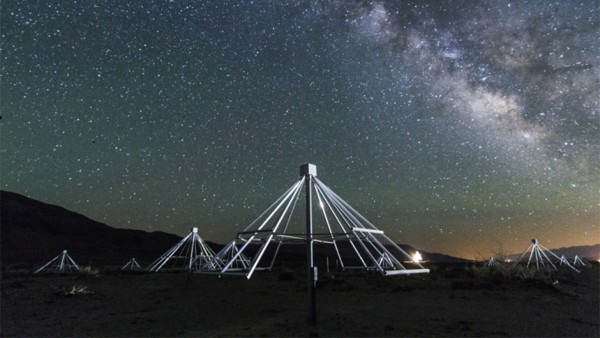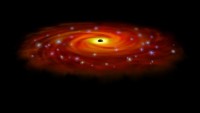New Radio Telecsope Array Can See The Entire Sky All At Once, 24/7
| L. P. Cabasag | | May 13, 2015 05:31 PM EDT |
(Photo : Photo by Gregg Hallinan) The new radio telescope array aims to get signals from flaring stars, flashing planets and other unusual objects in the night sky.
The Owens Valley Long Wavelength, a new array of radio antennas in California, has been geared up to capture some of the unseen pulses of radio light waves in the night sky. The new radio telescope array aims to get signals from flaring stars, flashing planets and other unusual objects in the night sky.
Like Us on Facebook
Gregg Hallinan, the principal investigator of the Owens Valley Long Wavelength and assistant professor of astronomy at the California Institute of Technology in Pasadena, said that the new telescope enables to see the entire night sky all at once and can take instantaneous image of everything, according to Astronomy Now. The radio telescope array might as well collect data on the traces of radio light from the very first stars and galaxies.
The new radio telescope array can monitor extrasolar space weather which is the interaction between the nearby stars and the orbiting planets of those stars. Also, the report added that the measurements of the interactions in other systems of star could discover new information on the strength of planetary magnetic fields and their potential of harboring of life. It is worthy to note that magnetic fields are factors in life development on our planet, which gives protection from perilous radiation and other particles.
The new radio telescope array's station in California is made up of 250 low-cost antennas where each of it is about 3 feet or 1 meter in size. "Just as the antenna of your car radio can detect local radio stations no matter where they are around the car, these antennas can detect signals anywhere in the sky," astronomer Joseph Lazio from JPL.
While there is a hope that the new radio telescope array can detect traces of radio light from the very first stars and galaxies, the array can be a place for astronomers to research on space weather like the auroras, which took place when stars released magnetic energy, Engadget reported.
TagsNew radio telecsope array, Radio telescope array, entire sky, entire sky all at once, sky 24/7, astronomical observation
©2015 Chinatopix All rights reserved. Do not reproduce without permission
EDITOR'S PICKS
-

Did the Trump administration just announce plans for a trade war with ‘hostile’ China and Russia?
-

US Senate passes Taiwan travel bill slammed by China
-

As Yan Sihong’s family grieves, here are other Chinese students who went missing abroad. Some have never been found
-

Beijing blasts Western critics who ‘smear China’ with the term sharp power
-

China Envoy Seeks to Defuse Tensions With U.S. as a Trade War Brews
-

Singapore's Deputy PM Provides Bitcoin Vote of Confidence Amid China's Blanket Bans
-

China warns investors over risks in overseas virtual currency trading
-

Chinese government most trustworthy: survey
-

Kashima Antlers On Course For Back-To-Back Titles
MOST POPULAR
LATEST NEWS
Zhou Yongkang: China's Former Security Chief Sentenced to Life in Prison

China's former Chief of the Ministry of Public Security, Zhou Yongkang, has been given a life sentence after he was found guilty of abusing his office, bribery and deliberately ... Full Article
TRENDING STORY

China Pork Prices Expected to Stabilize As The Supplies Recover

Elephone P9000 Smartphone is now on Sale on Amazon India

There's a Big Chance Cliffhangers Won't Still Be Resolved When Grey's Anatomy Season 13 Returns

Supreme Court Ruled on Samsung vs Apple Dispute for Patent Infringement

Microsoft Surface Pro 5 Rumors and Release Date: What is the Latest?












